Companies are well aware of the costs of absenteeism. According to the Bureau of Labor Statistics, U.S.companies see an average of 3.2% of its full-time/salaried workforce absent with another 1.9% missing time. A study by the Society for Human Resource Management (SHRM) performed research to calculate the cost of absenteeism. The study found that the total of direct and indirect costs as a percentage of payroll was 20.9%-22.1% of total payroll. Most companies know this and consider this simply the cost of doing business.
However, in the past few years, most believe this cost has increased significantly. One factor is that companies have been offering more paid time off to attract talent. This includes longer maternity and paternity leave, more vacation time, and even wellness days. But the other frightening and unknown factor is how much time is being lost from lower productivity, or on the flip side, overwork.
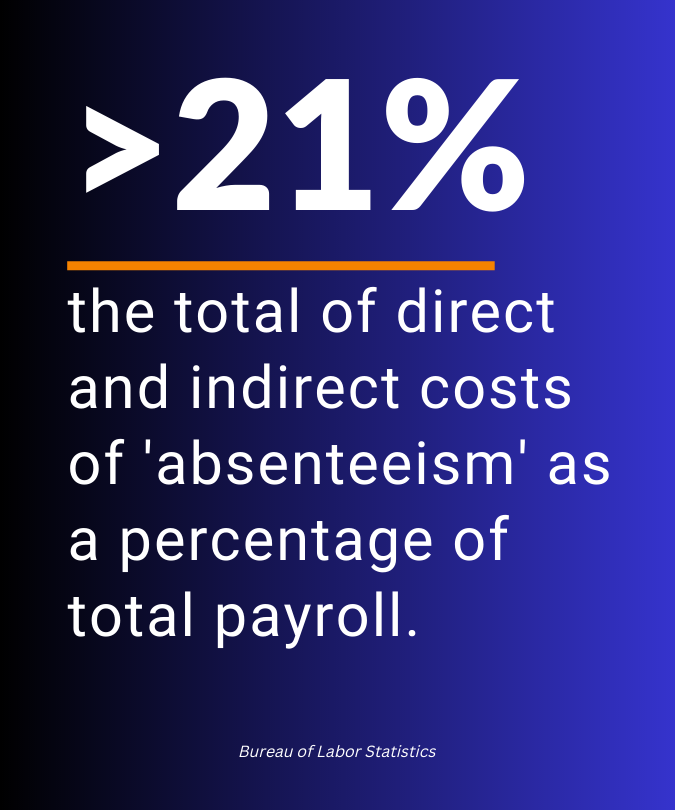
Overwork is a global killer—and its getting worse
A study performed by WHO (World Health Organization) found that overwork kills more than 745,000 people a year. The study proved that people who work over 55 hours a week have a 35% higher risk of stroke and a 17% higher risk of dying from heart disease. Furthermore, the number of deaths from heart disease due to overworking increased 42% over the 16 years of the study.
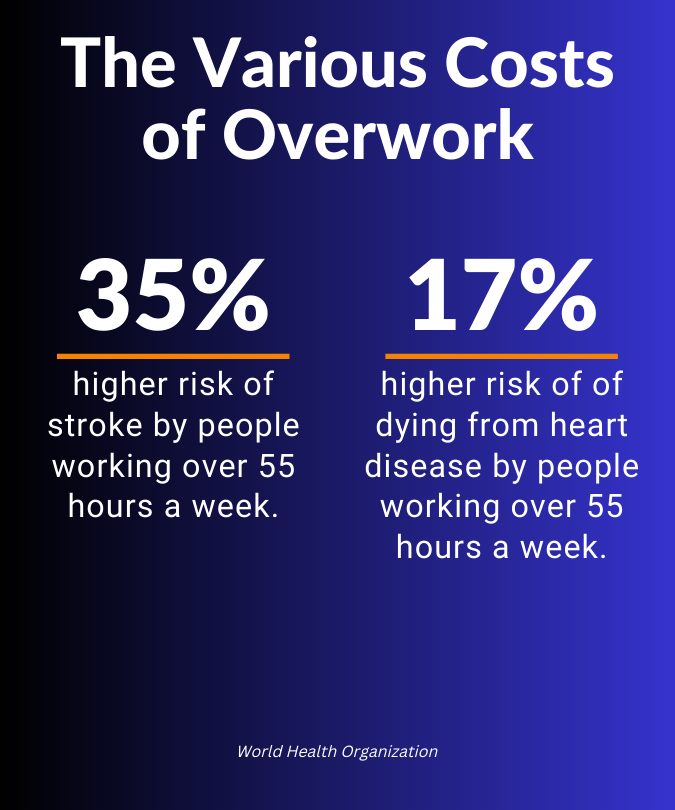
The WHO study did not include the past few years of the pandemic where lots of job openings have caused workers to put in extra hours to cover responsibilities. Additionally, remote work has become prevalent in many industries and a recent study performed by Microsoft says this is a major cause of employee burnout. The survey of 20,000 in 11 countries revealed that nearly 50% of employees and 53% of managers say they are burned out at work.
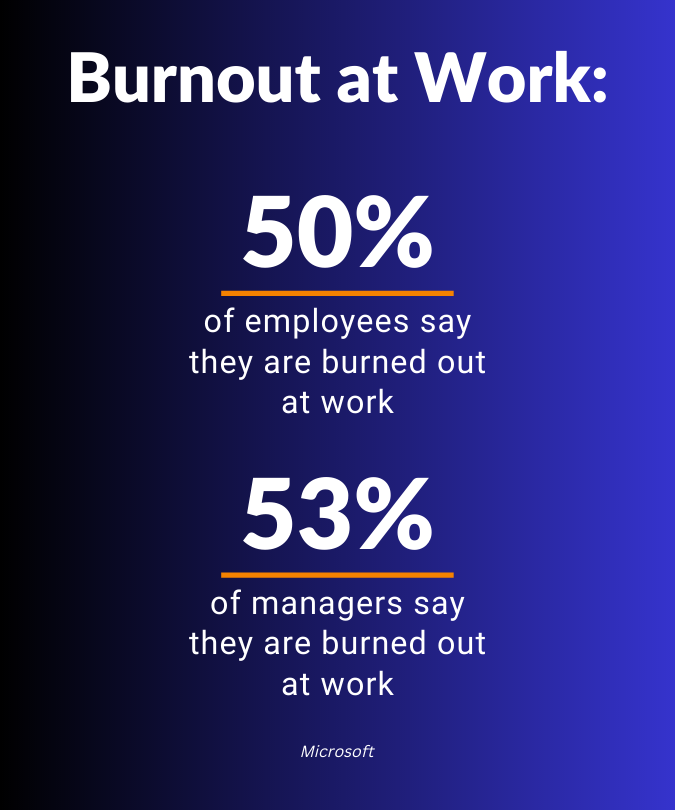
Despite concerns over quiet quitting, the study said that 90% of workers reported that they were productive at work and the average hours worked and number of meetings each week was on the rise. However, 85% of managers said they were not confident their employees were being productive—which means the pressure is higher than ever for employees to work more.
Bottom line, employees are at extremely high risk of burnout, causing physical and mental health concerns. This equates to missed work days, higher healthcare costs, and losing good employees. And all of this means that poor employee wellness is a bigger cost than ever for companies.
How virtual reality (VR) can improve employee wellness
So what can companies do to improve employee wellness?
There are a lot of operational changes, such as educating managers on overwork concerns, giving them tools to better manage remote workers, and reducing meeting expectations. This can take a lot of time and may not solve the underlying problems. However, there is something companies can do to give employees a way to better manage stress—provide them a fun and easy way to lower heart rate and gain focus. And VR is an amazing tool to deliver this.
Meditation has been shown to have numerous benefits for individuals, including reducing stress and anxiety, improving focus and concentration, and promoting overall well-being. In the workplace, these benefits can translate into increased productivity, better decision-making, and improved job satisfaction. Additionally, meditation can help to create a more positive and relaxed work environment, which can lead to better team dynamics and improved communication.
This sounds great, but mandatory meditation classes don’t seem like a fit for most workplaces and won’t work at all for remote workers. This is where VR can help.
Virtual reality courses on meditation can teach employees how to meditate and headsets can be donned at home or in the office for a quick meditation session. The nature of virtual reality allows employees to completely immerse themselves in the experience and get the full value of the purposeful break. Companies will never be able to completely remove stress from work, but they can help employees to better manage that stress.
Meditation VR training is in use for corporate and remote workers
A VR training course called The Meditation Space is gaining popularity for companies to help improve employee wellness. Offering a small quiet room and a headset in a work environment as well as delivering the content wirelessly to remote workers is a simple way to encourage wellness breaks.
This VR meditation content has hundreds of nature videos, different guides, and many music options to take employees on a personalized meditation break. This content is often provided as a part of a mindfulness program that includes VR content for breathing exercises and for personalized instruction on self improvement.
When meditation breaks are readily available, employees are able to reduce burnout, reduce negative emotions, and are overall more refreshed and focused.
VR Meditation is a catalyst for improving employee wellness
If it’s not already, employee wellness should be a growing concern for companies. Improving overall wellness can improve employee productivity and engagement, reduce absenteeism and turnover, and lower healthcare costs. Additionally, investing in employee wellness can also improve a company’s overall reputation and attract top talent. And nothing makes a better, faster impact on this than a distribution of VR meditation and mindfulness training content.
Benefits to providing VR for meditation and mindfulness training
- Decreases stress – the number one benefit of meditation during the workday is an immediate reduction in stress. And regular meditation will have a long term impact on lowered stress levels.
- Lowers costs of unplanned absences – less sick and mental health days means less cost due to overtime, coverage, and loss of productivity.
- Lowers healthcare costs – mental wellness and physical wellness are interwoven. Less sick time and lowering instances of heart disease from overwork will greatly reduce healthcare costs for the company.
- Improves morale – offering meditation training shows a company cares about the welfare of their employees. Plus, lower stress means better attitudes at work and this can quickly spread and greatly improve company morale.
- Increases effectiveness – reducing stress levels has been shown to make employees more effective at communications and getting work done. It’s not about working more hours, but making the hours you are working as effective as possible.
Hybrid work environments are here to stay. And that means overwork and burnout will continue to be a problem. Companies need to take purposeful action to help employees manage this new normal. VR meditation is just what companies need to make a difference.
Wondering how to get started with VR training?
For learning and development leaders looking to help their company’s thrive, VR training is the answer. VR content naturally compliments existing training content to provide employees with ways to apply and practice skills needed to be successful.
Want more evidence for leadership on the cost cutting benefits of VR training? Read whitepaper here!
In our previous whitepaper we covered how to bring VR into your training program, get the step-by-step guide here!
Download the whitepaper: 5 Ways VR Training Helps Companies Even in an Economic Downturn’:
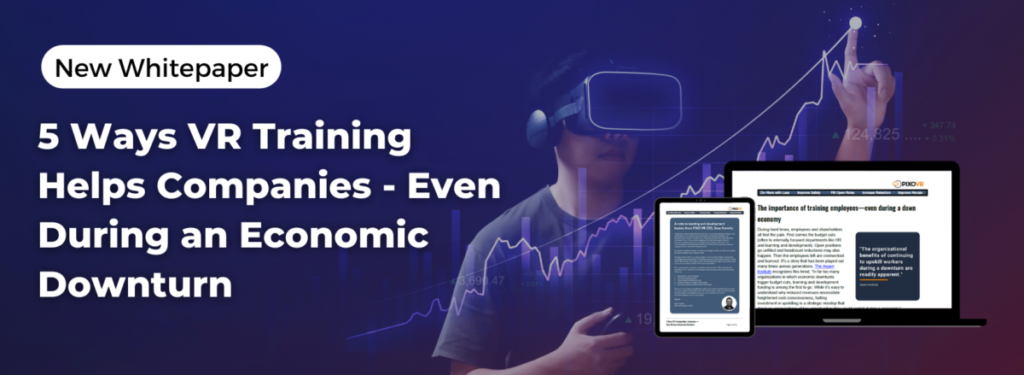
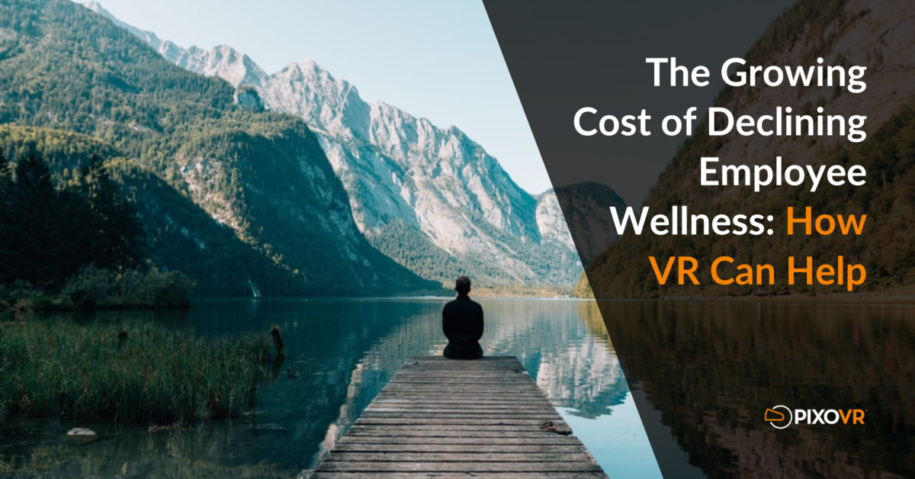
Leave a Reply
You must be logged in to post a comment.